Introduction / Vision
I started this project with an initial idea of using old paper wrappers and folding them into origami cranes and making a project out of that. This idea worked well with my desired aesthetic of “Chinese”. Thankfully however, after doing more research and idea searching, I came across an idea to make a lamp using plastic spoons [1] and wanted to fit that into my aesthetic by making the lamp into the shape of a lantern. After finding this idea, I started planning and doing more research into it and I later found a similar idea that used plastic spoons but instead of creating a lamp, the final product would look like a lotus flower [2]. This idea drew my attention more since the lotus flower looked more visually appealing and carried a deeper meaning into my aesthetic. Overall, with this idea, I wanted to create a decoration piece that would grab attention and spark conversation when people would see it.
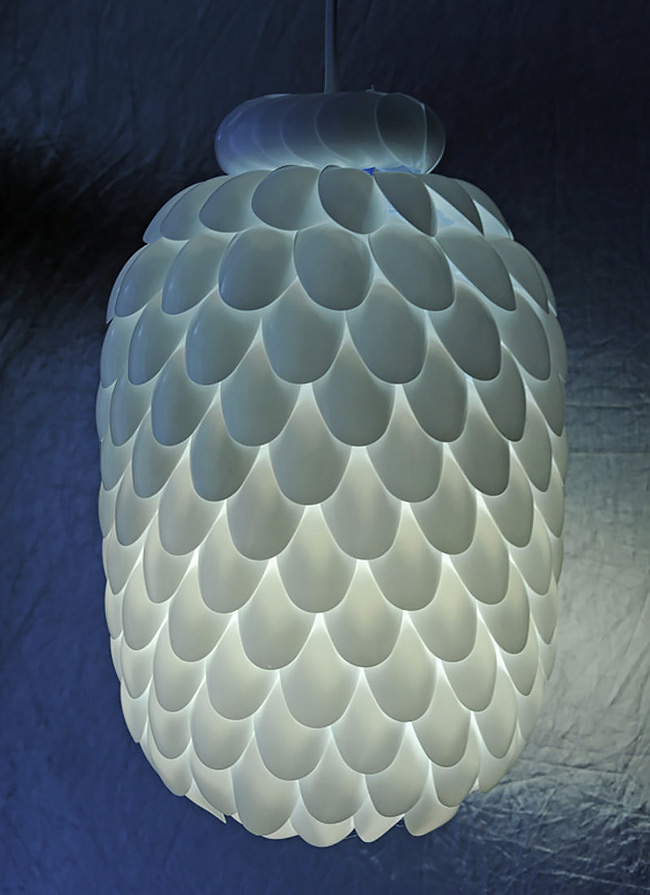
Design Process
This project didn’t require my ideal engineering design process. Normally, I would start with identifying the problem or establishing the need. This is usually given or determined through the request of the client. Then I start researching the problem looking if there are any existing solutions and if there are, if they can be improved. After which, I start brainstorming solutions using ideas taking existing solutions into consideration and adapting my solution to the specific criteria for the client. Once I have found a few solutions that seem feasible enough to pursue, I start pretotyping to hone in on a specific solution. I prototype the solution that seems the most promising and continue to run tests and iterate to improve the design. I continue this process until the solution meets the needs of the client and satisfies all the criteria.
For this specific project, however, I didn’t follow my ideal design process. This project followed a more trial and error design process. The project didn’t require or have the need for any calculations that would make the design process more linear and exact. Like most projects should start, I began by brainstorming and researching ideas for upcyling. This led to a few different ideas that seemed to fit the requirements. As I said earlier in this post, I started with an idea involving paper wrappers and origami cranes. Then I moved onto the plastic spoon lamp and finally settled on a variation of the lamp idea which was creating a lotus flower. This idea already incorporated my desired aesthetic which was “Chinese” as a lotus flower carries a lot of meaning within Chinese culture. After finalizing the idea, I planned on how to fabricate the project and thought about the materials and tools I would need to create it. Once that was figured out, I went to get the materials needed. After gathering all the necessary materials, it was time to fabricate and finalize the project.
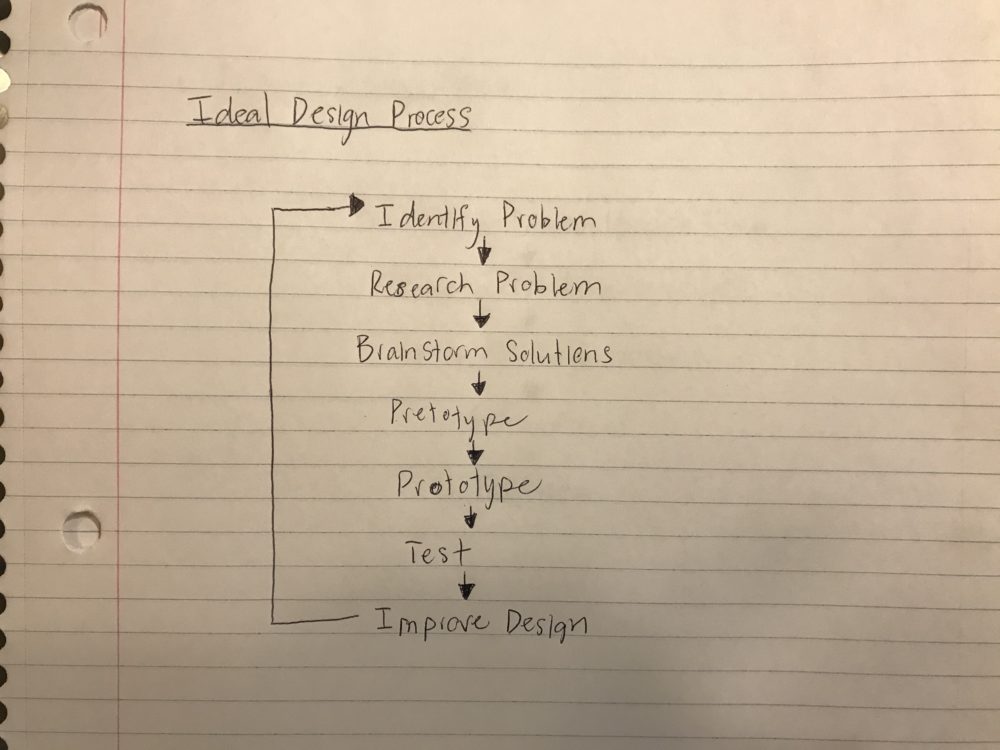
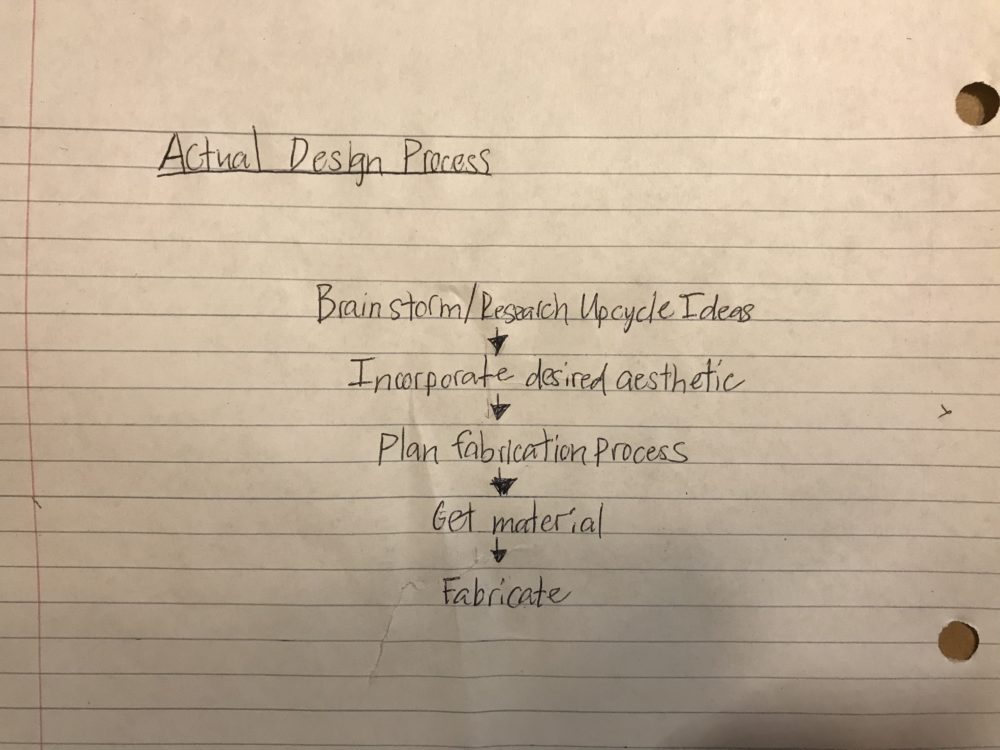
Materials
- 50 X Plastic spoons
- Hot glue gun
- Candle lid
- 1 X Yellow flower
- Hand saw (optional)
Fabrication Process
First and foremost, I gathered all the material and tools needed to create my project.
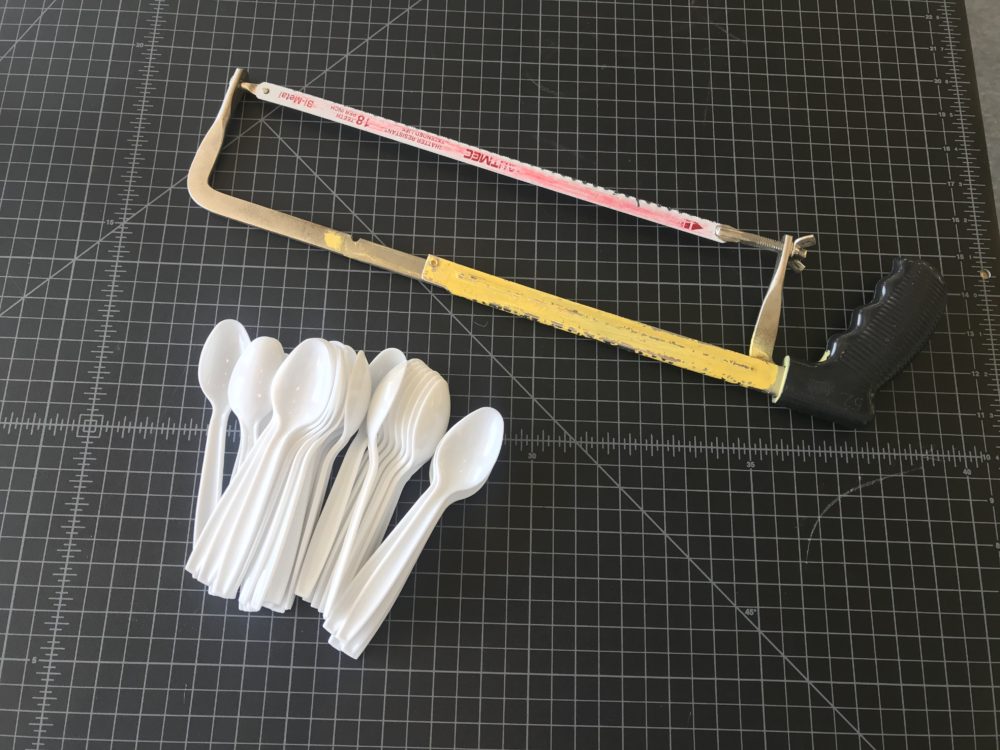
After gathering all the necessary materials and tools, I started by trying to use office scissors to cut off the handles of the plastic spoons. This method wasn’t feasible since the scissors wasn’t sharp enough to provide a clean cut and would shatter the spoon entirely. Next, I tried using the hand saw. I held the handle of the spoons down onto the edge of a table and used the hand saw to remove the spoon heads. After cutting a few off, I quickly realized using the hand saw wasn’t efficient and took way too much time and way too much energy however, it did provide a clean cut. As a compromise I chose to just snap the heads off with my hands. This method was much less time consuming at the cost of the quality of the break. Since the plastic of the spoons are very brittle, I held the spoon very carefully as I used my thumb to try and cover the majority of the surface area on the head of the spoon. This decreased the chances of having cracks in the head after breaking the handles off. As a result, I saved a lot of time separating the heads from the handles but ended up with some spoon heads having jagged breaks and angled breaks. However, I found this acceptable since I was planning to glue the heads by the bottoms where the breaks were so the breaks would be hidden away.
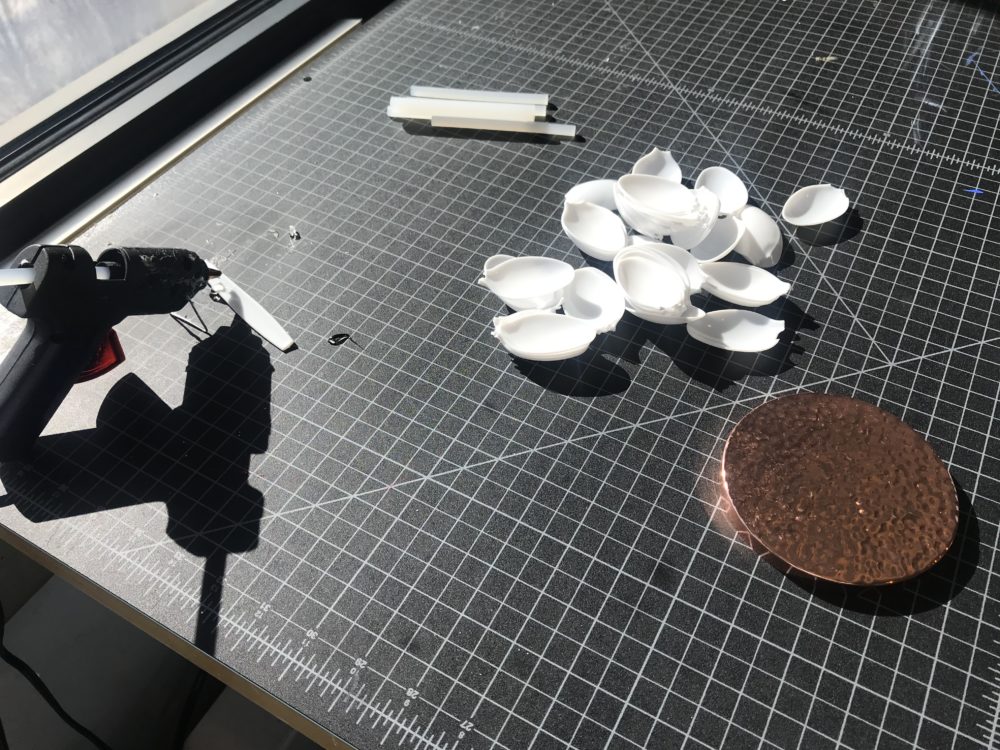
After I finished separating all the spoon heads, I started creating the flower using the candle lid as the foundation. I began by gluing one spoon head from the break onto the center of the candle lid standing as vertical as I could get it. I repeated this process of slightly overlapping the previous spoon until I was able to wrap around and complete the center circle of ‘pedals’. This first central circle took five spoons to complete. After finishing the ring, I placed the head of the yellow flower into the direct center of the initial ring it make the lotus flower look more convincing. I continued wrapping spoon heads around to create the second ring of pedals. However, after every ring, the next ring I would create would be at a greater angle from the vertical to give the flower a blooming look. In the end, I created 5 rings with the final ring of pedals being almost horizontal.
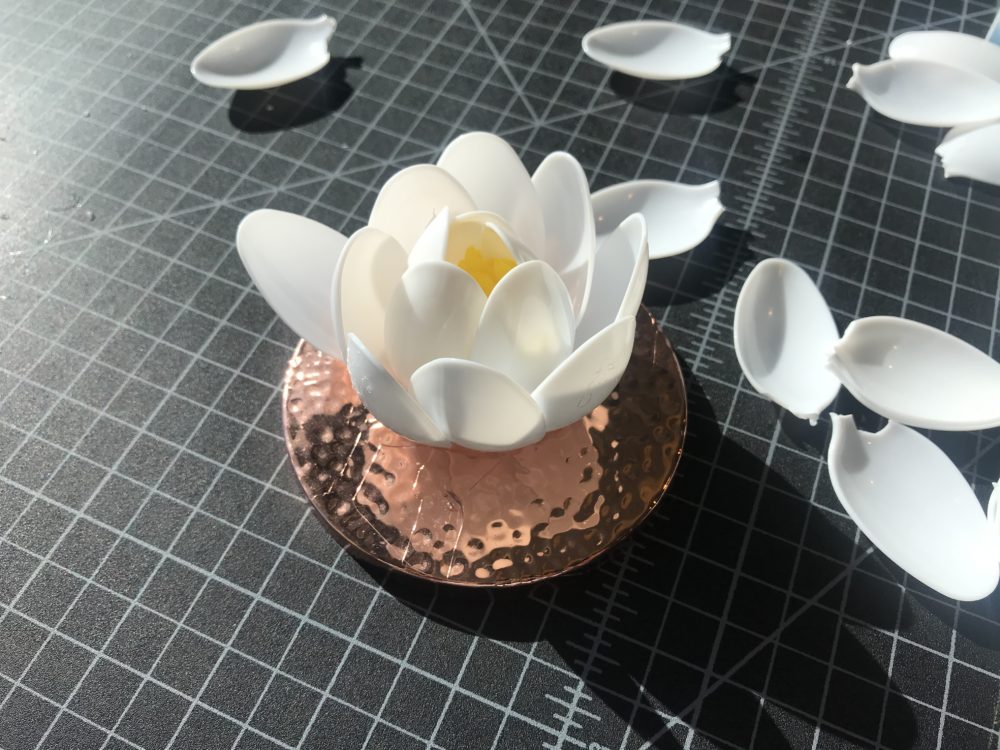
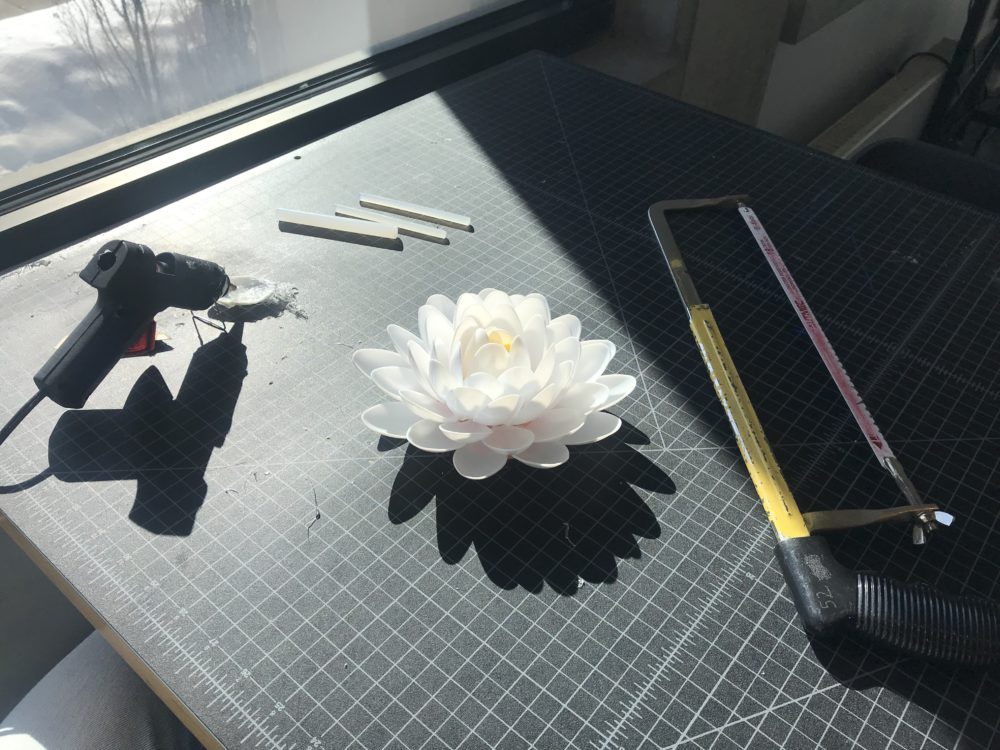
Final Product
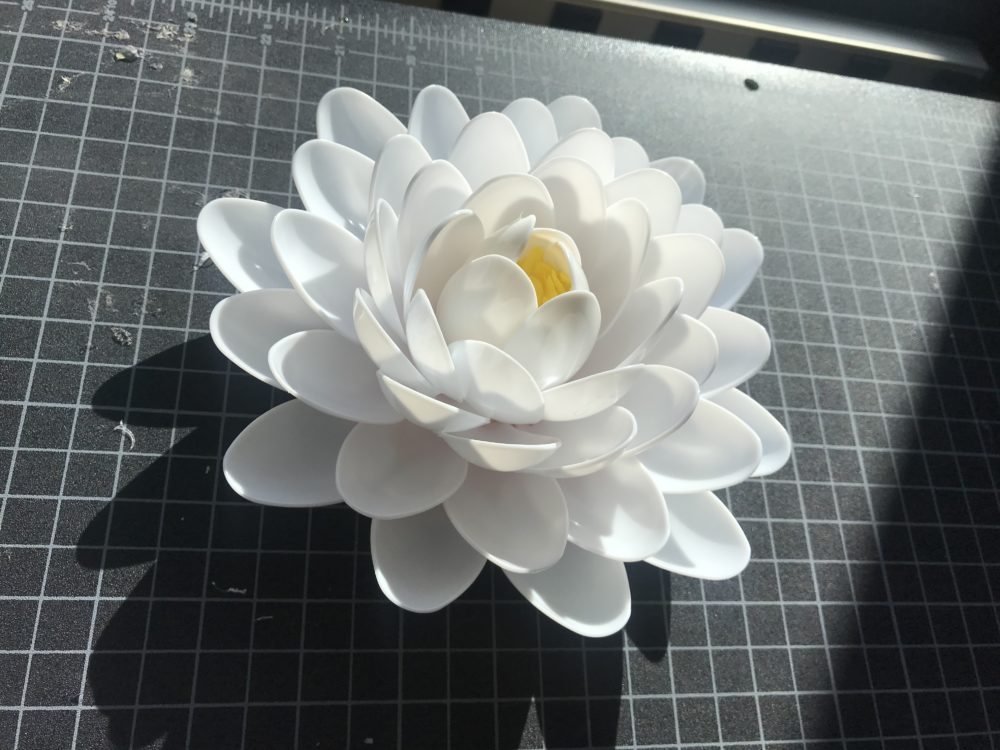
In the final product, there are five completed rings of pedals. Each ring has overlapping spoons to give a more realistic look. Each ring is created with the spoon heads at a larger angle from the vertical with the first layer standing perpendicular to the base and the last layer being almost horizontal. The inconsistent breaks on the spoon heads are for the most part, hidden from sight and can barely be seen.
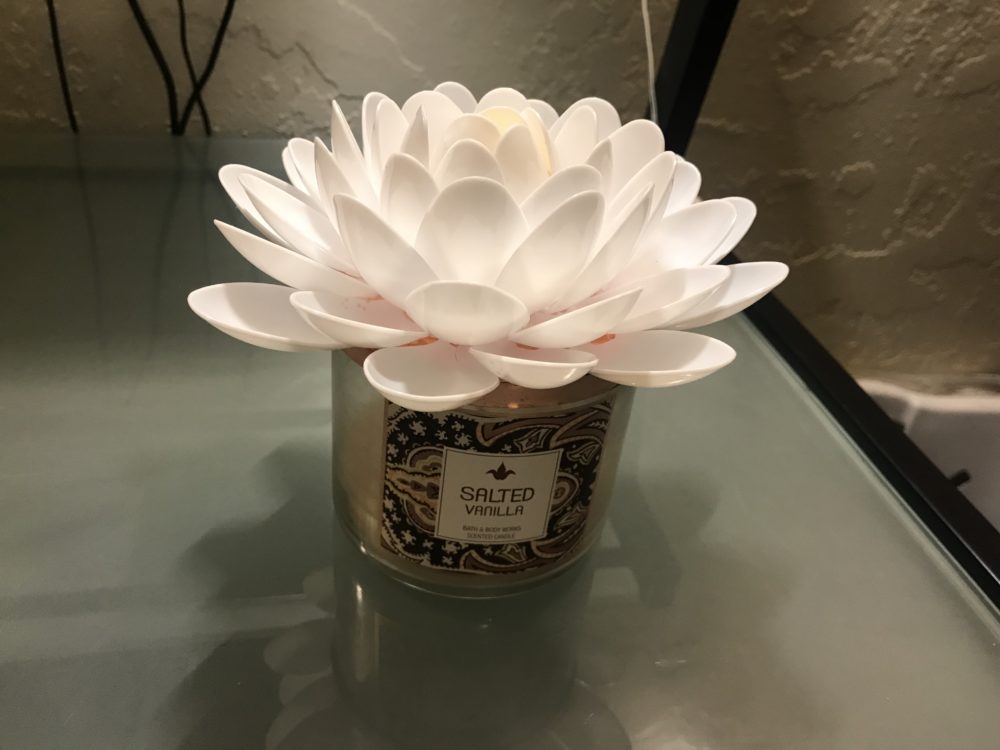
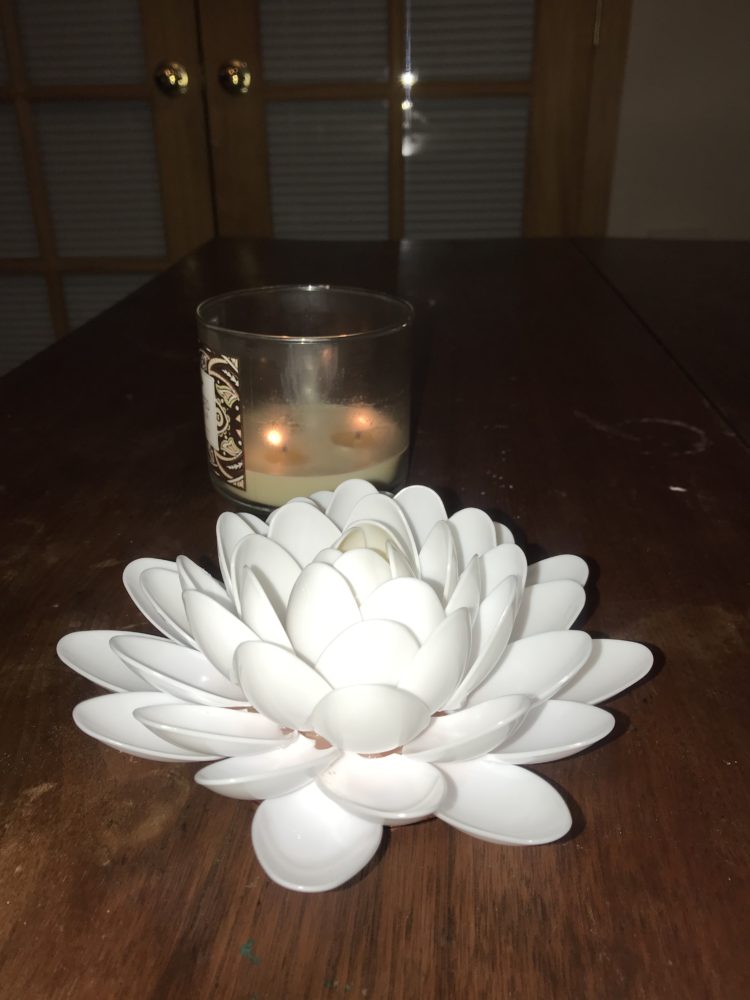
Functional Goals
Initially, I wanted to incorporate a light bulb within the flower but that showed to be somewhat difficult. So as a compromise I chose make the flower on top of a candle lid from which the candle can be a source of the light. As a piece of decor, I would say this project meets that goal. It’s something that can be admired by anyone without knowing what it is.
Artistic Goals
The final product fit my vision exactly as I imagined it. The project looks identical to a lotus flower from a short distance and.
Future Iterations
In future iterations, I would like to find way to incorporate the handles of the spoon. In the figure below, I showed a way I could have used the handles but ultimately decided against it. The way the handles were used distracted from the flower itself. I would also like to further my goal of turning the flower into a functioning lamp by fitting a small light bulb into the center. This would allow the flower to glow and be more visible in the dark.
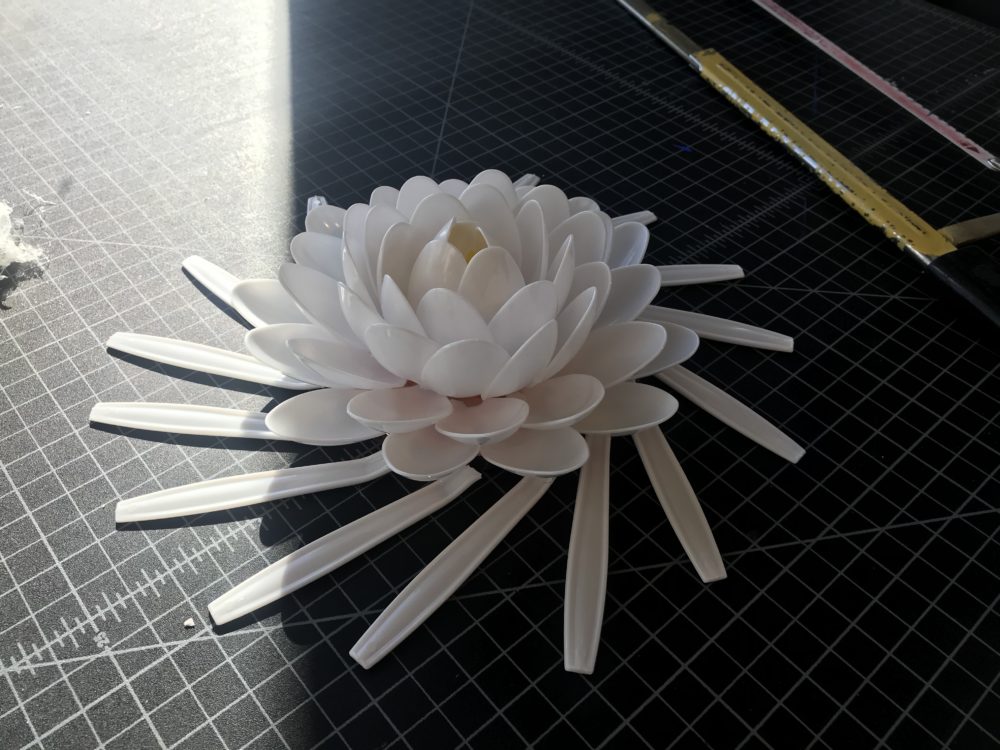
Video Presentation
References
[1] “Plastic Spoon Lamp” Handimania. Accessed February 11, 2020. https://www.handimania.com/diy/plastic-spoon-lamp.html [2] DIY Plastic Spoon Lotus Flower. Accessed February 11, 2020. https://www.youtube.com/watch?v=3-M0R1zFTak&app=desktop

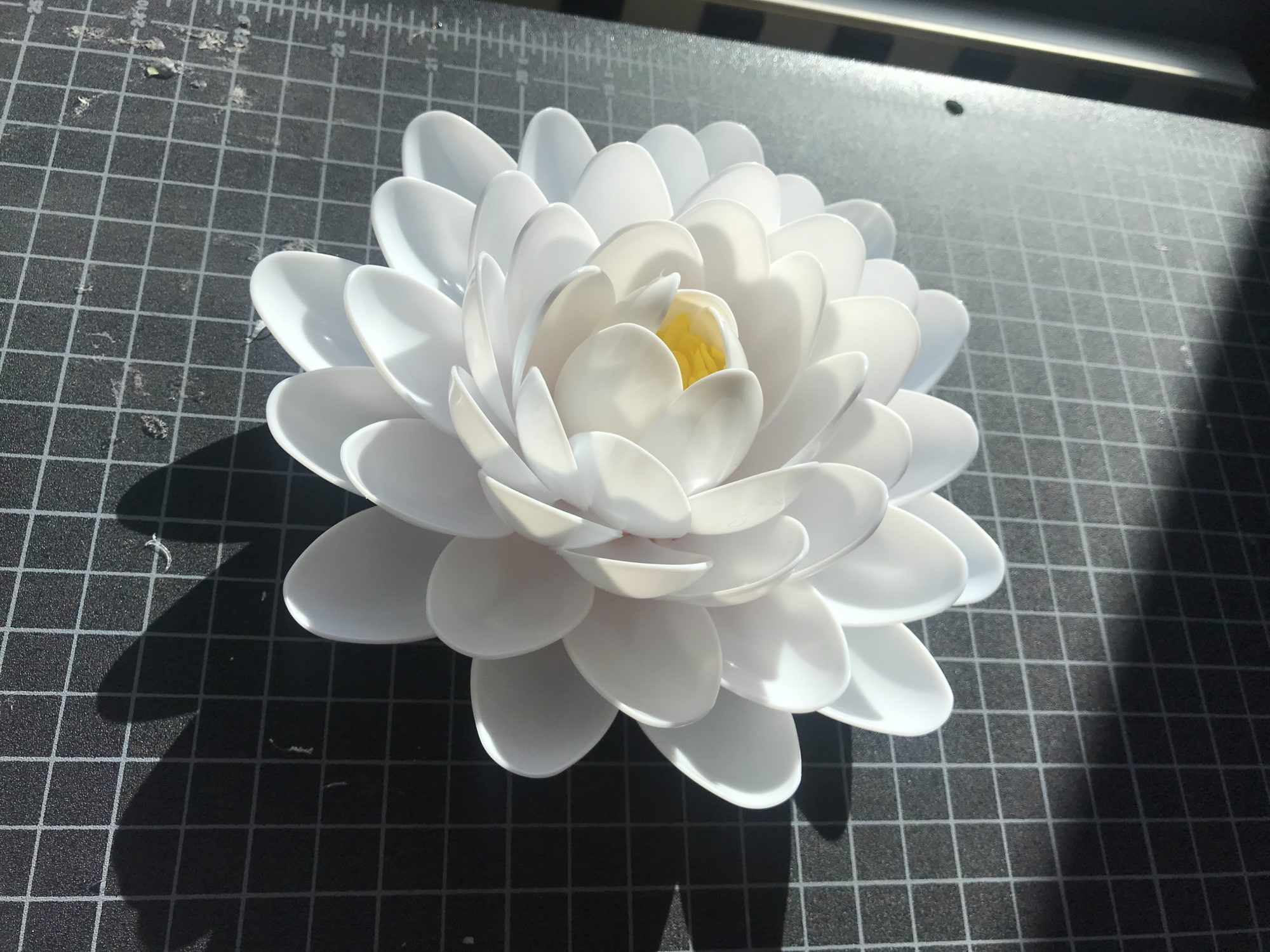
7 Comments. Leave new
I really enjoy the lotus and think you’ve created a truly beautiful piece out of something as plain as plastic spoons. I think that an addition of more color throughout the piece would make it stand out more. Like adding more yellow at the base of the spoons as it fans out. Overall I think its unique and you did a good job.
You did a great job taking an object that is not usually pleasing to the eye or fitting any particular aesthetic and turning it into a really cool piece of art. In this project, you had a great eye for the artform and the flower looks almost realistic. In future iterations, you may even be able find plastic spoons with different colors to make different flowers.
Presentation Critique:
Statement of Meaning: I really love how well you captured the image of a lotus flower with plastic spoons! I really does look like a lotus flower!
Benjamin Robles
Bryan,
I think the design came out great, I like the choice of yellow for the middle flower, it makes the whole thing look nice. I also like the use of the candle lid, it makes the candle look interesting. I think it would be cool to paint each individual spoon to add a little more color, or make multiple of different colors and then put together. Overall the design has good depth and design.
I think your decision to snap off the handles instead of sawing off each one of them was a good one. I could not tell that there were inconsistent cut lines when the hole piece was assembled. I really like your choice to add a yellow flower in the center, the little splash of color in all of the white looks good.
When I initially looked at the final project I thought it was an actual lotus and it took me a second look to realize it was made from plastic spoons. This piece is really something that could sit on a desk and be easy to look at on the eyes. For the middle part instead of using an actual flower for the yellow, you could use something that wont lose it’s color over time.
Hey Bryan,
Great sculpture to start with, it looks so well made that it appears to bought off a store or online. Your thought process and the whole vision about the project is very much on point. I would have loved to see some origami work because I personally like it. I like how your sculpture relates to the Chinese aesthetic, though i don’t know much about this aesthetic, I would love to learn something more. I see you’ve gathered plastic spoons for the project, was that a problem, or did you buy it? Also, were there any other designs that you considered before deciding on the lotus? As a product, it is really capable of fitting into any space, it can be a showpiece at home, an artwork or just a light used in office or study space. I would love to see how this can me taken forward. The idea of incorporating the handles is amazing, it will show the true essence of doing an upcycle project, showcasing that no material should be wasted and should be reused. A really detailed report. Amazing job done.